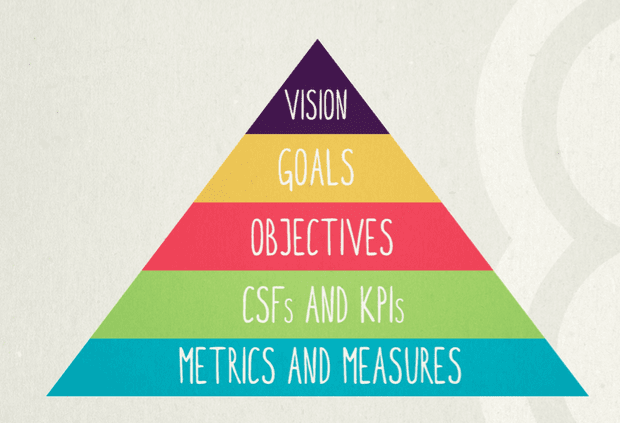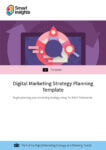9 key differences between strategy vs tactics
‘What is the difference between strategy vs tactics?’ is one of the most common questions that ‘crops up’ when I’m running training workshops or discussing creating marketing plans with businesses.
It’s no surprise since the difference between these two activities often isn’t distinct. Yet, it’s an important question to answer since our research shows that so many businesses don’t have a clear marketing strategy or plan.
Without a clear strategy, it’s likely some of your tactics may be poorly directed, so may not be propelling the business in the direction needed.
9 key features that distinguish marketing strategy vs tactics
In this article, I will show the difference between strategy and tactics by looking at characteristics of marketing strategy, which distinguish it from tactics. I’ll give examples that help show the difference between the two based on essential strategic activities.
What’s the difference between strategy vs tactics?
Strategy dictates the marketing activity needed to achieve your business goals and vision, whereas tactics, the ‘detail of the strategy’, answer how exactly that will happen.
The 9 points below can be used to check if your current marketing strategy is high-level enough, compared to a tactical plan. You can also highlight the benefits of a marketing strategy when advocating for a more structured approach to strategy and planning within your business.
1. Strategy defines competitive advantage
Looking at strategy through the lens of how precisely you can compete against competitors is a good way of distinguishing between strategy and tactics. If it fits your mindset, you can think of it as your ‘rules of engagement’ in a battle or war.
Sun-Tsu was certainly the first to write about this and Sun-Tsu’s strategic thinking can be readily applied to marketing strategy, his well-known, but likely apocryphal quote illustrates this well:
“Strategy without tactics is the slowest route to victory. Tactics without strategy is the noise before defeat”.
If you’re looking for a marketing strategy to reach and acquire more customers, why not book a free consultation to kick off your strategic planning? Identify your problems, and discuss solutions that work for your business. Find out more about the RACE Framework, and integrated marketing strategy tools covered in this blog.
2. Strategy defines top-level resource allocation
Every business has limited resources of budget, people, and time at their disposal in the same way a general does. So, an essential part of the strategy is deploying these resources to drive the biggest impact.
I like the technique of informing strategy by deciding what you WON’T invest in addition to deciding where you will focus. In this classic Harvard Business Review paper, it’s suggested that many strategies fail because they are not strategies at all, instead, they are simply aspirations…
“One major reason for the lack of action is that “new strategies” are often not strategies at all. A real strategy involves a clear set of choices that define what the firm is going to do and what it’s not going to do”.
3. Strategy sets a specific long-term vision
Within SOSTAC®, the O stands for objectives and vision. You need specific targets to work towards and review performance against. Lack of specific targets to be delivered by communications is a common problem when there is no strategy and people in a business are focusing on tactics only.
As well as these hard numbers, having a softer idea of future vision is important so you can communicate your direction with the people inside a business and beyond to partners and other stakeholders. Your strategy should define the linkage between vision, goals, objectives and how to achieve them through resource allocation.

4. Strategy sets specific long-term objectives
Collectively, tactics should support the overall direction of a business. They should contribute to the overall aims of the business. The best way to ensure that the tactics are contributing to overall strategic objectives is to LINK align objectives against strategies.
We also recommend building forecasts based on conversion models to ensure that strategic investments are going to give us the returns we need.
5. Marketing strategy defines priority markets, audiences and products
This is where Segmentation, Targeting and Positioning fits. Tactics will involve devising the best way to communicate these to audiences but typically won’t involve a strategic review of which are the best audiences or product/market fit.
In a larger business, using the BCG Matrix to review your portfolio of products and set future priorities for growth is a key technique.
Another key part of STP is defining key audiences and marketing personas which will inform the tactics of how you reach and communicate to these audiences.
6. Strategy defines brand positioning
Once our target audience characteristics, preferences and behaviors are defined through personas, the strategy involves defining how we want our brand to be perceived relative to competitors.
With extra financial pressures on customers, competitive advantage is even more critical for businesses in crowded market places. In our experience, having a defined strategy can be the difference between make or break. If you’re still looking for buy-in for investment in marketing, don’t miss these 10 reasons you need a digital marketing strategy.
7. Strategy defines how to engage the audience through branding
Branding can be considered at a tactical level, for example, which brand idents and color-ways to use. But branding should also be thought through at a strategic level, to consider how a business can appeal to audiences through key messaging including message architecture and tone-of-voice, again part of positioning relative to competitors. That’s why we recommend using the RACE Framework to plan your brand marketing strategy.

8. Strategy defines a long-term roadmap for investment in technology and other major investments
In today’s marketing, we also need to exploit data and technologies to get a better response from our tactics. We should techniques like AB testing available through conversion optimization tools to get the best results from the tactics we use. But to do this modern marketing strategy requires a marketing technology stack to be defined to achieve this
In this era of digital transformation, many organizations are running change initiatives to use marketing technology to improve their processes and use of customer insight and data. The investments in digital experiences, marketing automation and, in future, artificial intelligence and E-learning will be significant.
So often, it won’t be practical in terms of the cost of technology or the complexity of investment to implement everything required in one year. So longer-term roadmaps of martech to build an integrated martech stack need to be defined to support marketing goals.
9. Strategy helps steer activities through governance
Finally, a marketing strategy should link through to give businesses an overarching control of the tactics. This involves the Action and Control parts of PR Smith’s SOSTAC® framework. As part of strategic planning, we need to make sure we have the best tactical process to ensure tactics are aligned with a strategy to make sure they are kept on track.
All businesses use tactics to run their marketing because these happen organically, but a marketing strategy doesn’t, instead it requires a proactive effort to define it and communicate it to inform tactics. It’s vital to define a strategy since ultimately this is what will make your business successful by differentiating it from your competitors.
Strategic and tactical marketing tools for your business
If you’re planning marketing strategy or tactics for your company, we recommend applying the RACE Framework. RACE supports you to implement a data-driven customer-centric strategy across the customer lifecycle of Reach, Act, Convert, Engage.






More Stories
Win a Life of Adventure – The Ultimate Bucket List Adventure Giveaway
Derwent Chromaflow Cats Eye Tutorial
Old Cars Reader Wheels: 1942 Hudson 20-T